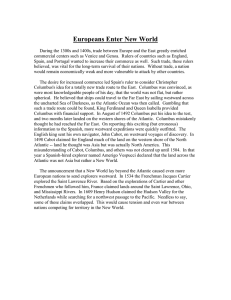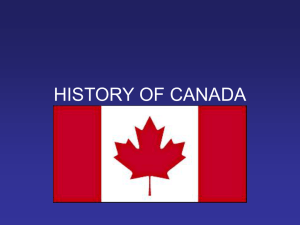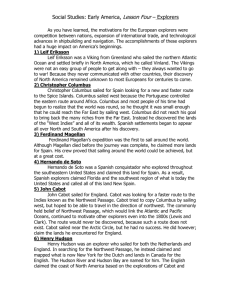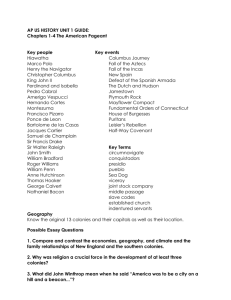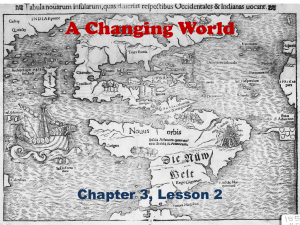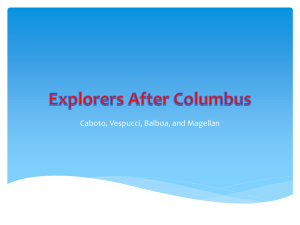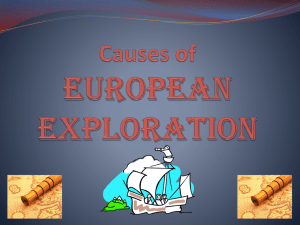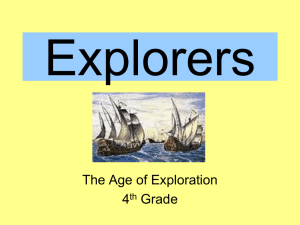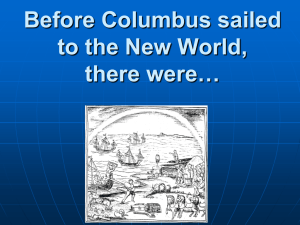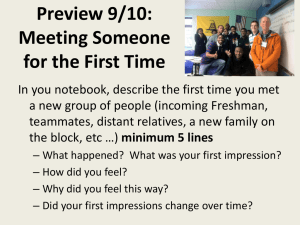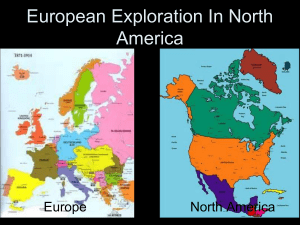Early Exploration - Kawameeh Middle School
advertisement
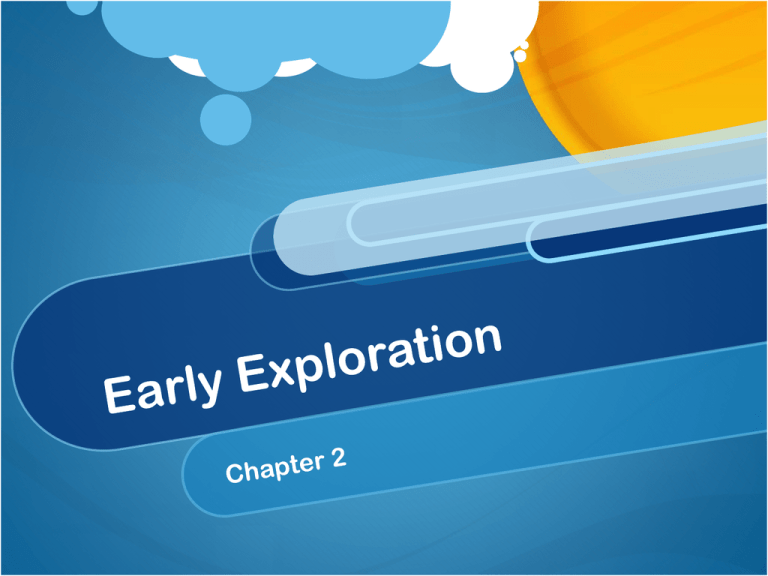
Amerigo Vespucci Amerigo Vespucci, a Florentine navigator and explorer who played a prominent role in exploring the New World. First trip May 10,1497, controversial letter indicates that ship sailed through the West Indies (Discovered Venezuela) May 1499, He discovered the Amazon River and Cape St. Augustine. North and South America are named after Amerigo Henry Hudson Henry Hudson made his first voyage west from England in 1607, when he was hired to find a shorter route to Asia from Europe through the Arctic Ocean. Because of the thriving trade in spices and silk between Asia and Europe, Henry Hudson and other explorers made a number of difficult and dangerous voyages searching for a northeast or northwest passage. He sailed for the Dutch East India Company–in 1609 where he tried to sail con across the North American continent to the Pacific. After navigating the Atlantic coast, Hudson’s ships sailed up a great river (which would later bear his name) but turned back when they determined it was not the channel they sought. Christopher Columbus The explorer Christopher Columbus made four trips across the Atlantic Ocean from Spain: in 1492, 1493, 1498 and 1502. He was determined to find a direct water route west from Europe to Asia, but he never did. Columbus wanted fame and fortune. Ferdinand and Isabella wanted the same, along with the opportunity to export Catholicism to lands across the globe. Christopher Columbus did not “discover” the Americas, nor was he even the first European to visit the “New World.” http://www.history.com/topics/exploration/christopher-columbus Giovanni Verrazzano Giovanni da Verrazzano was an Italian explorer who chartered the Atlantic coast of North America between the Carolinas and Newfoundland, including New York Harbor in 1524. The Verrazano–Narrows Bridge in New York was named after him. While sailing south of Jamaica, the crew spotted a heavily vegetated, seemingly unpopulated island, and Verrazzano dropped anchor to explore it with a handful of crewmen. The group was soon attacked by a large assemblage of cannibalistic natives who killed them Hernando Cortes Born in Medellín, Spain, conquistador Hernán Cortés (c. 1485-1547) first served as a soldier in an expedition of Cuba led by Diego Velázquez in 1511. He set his sights on overthrowing the ruler Montezuma II in the Aztec capital of Tenochitilán. The Aztecs eventually drove the Spanish from Tenochitilán, but Cortés returned to defeat the natives and take the city in 1521. John Cabot An Italian explorer sailing for England, John Cabot was the first European to reach the shores of North America after the Vikings. After returning to England to report his success, Cabot departed on a second expedition in mid1498, but is thought to have perished in a shipwreck en route. Jacques Cartier In 1534, France’s King Francis I authorized the navigator Jacques Cartier (1491-1557) to lead a voyage to the New World in order to seek gold and other riches, as well as a new route to Asia. Cartier’s three expeditions along the St. Lawrence River would later enable France to lay claim to the lands that would become Canada. Francisco Pizaro Spanish explorer and conquistador Francisco Pizarro helped Vasco Núñez de Balboa discover the Pacific Ocean, and after conquering Peru, founded its capital city, Lima. In 1532, accompanied by his brothers, Pizarro overthrew the Inca leader Atahualpa and conquered Peru. Three years later, he founded the new capital city of Lima.

